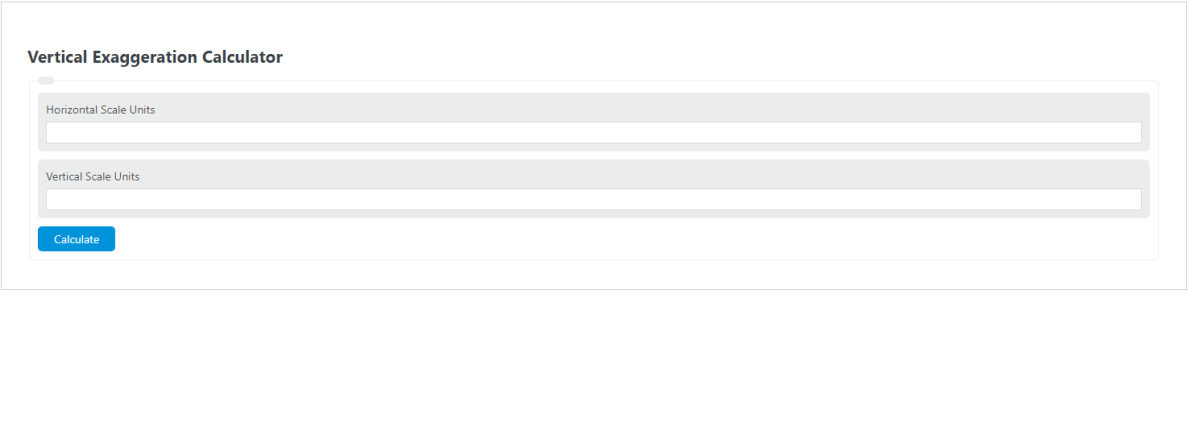Enter the real-world units of horizontal scale and the real-world units of vertical scale into the calculator to determine the vertical exaggeration.
- Vertical Angle Calculator
- Ground Speed Calculator
- Angle of Elevation Calculator
- Angle of Depression Calculator
- Incline Rate Calculator
Vertical Exaggeration Formula
The following formula is used to calculate a vertical exaggeration:
VE = HS / VS
- Where VE is the vertical exaggeration
- VS is the units of horizontal scale
- HS is the units of vertical scale
To calculate the vertical exaggeration, divide the horizontal scale by the vertical scale.
What is a vertical exaggeration?
Definition:
A vertical exaggeration is a rate at which the units of horizontal scale change with respect to the units vertical scale on a graph or map.
Typically vertical exaggeration is used to help detail subtle geographic features.
How to calculate vertical exaggeration?
Example Problem:
The following example outlines how to calculate the vertical exaggeration shown on a map.
First, determine the units of horizontal scale. For this example, the units of horizontal scale are kilometers.
Next, determine the units of the vertical scale. For this example, the vertical scale units are meters.
So, 1 km is equal to 1000 m.
Finally, calculate the vertical exaggeration using the formula above:
VE = HS / VS
VE = 1000 / 1
VE = 1000:1
